






















CONTENT ADVISORS
Audrey Lau, Jennifer Wee
EDITORIAL TEAM
Lim Mui Khi, Domenica Tan, Jenny Ang, Celine Sim
PUBLISHING AGENT
ThinkFarm Pte Ltd
Managing Director
Christopher Tay Head, Editorial Chua Kim Beng
Head, Creative Lee Lily Head, Client Relationship
Jessie Kek
For advertising enquiries, please call 6831 1299 or email advertise@thinkfarm.sg
The type of surgery to undergo — a total or partial knee replacement, or knee preservation — for painful knee joints depends on a few factors, including the patient’s age, knee condition and problems caused. by
Goh Bee Lian
“We only consider surgery if the arthritis is causing significant problems and other treatments like medication, physical therapy or exercises haven’t helped,” Dr Eric Liu says about knee pain.
Not all bad knees need a total replacement of the joint. It is only when joint damage is very severe or complex that a total knee replacement (TKR) is likely. Otherwise, partial knee replacement (PKR) or knee preservation (KP) are options for those whose knees are less damaged.
Knee pain can be due to diseases like gout and rheumatoid arthritis, but is most often due to osteoarthritis (OA), where the protective cartilage that cushions the joints is worn down over time. OA is a significant health concern due to its impact on mobility and quality of life. Typically a disease of the elderly, OA is increasingly affecting younger
patients amid a rise in popularity of vigorous sporting activities.
“Some patients wonder if their x-rays show enough damage to warrant a knee replacement. However, not everyone with these changes needs surgery. We only consider surgery if the arthritis is causing significant problems and other treatments like medication, physical therapy, or exercises haven’t helped,” said Dr Eric Liu, Consultant, Department of Orthopaedic Surgery, Singapore General Hospital (SGH).
In a healthy knee joint, cartilage and the gelatinous meniscus separate the femur (thigh bone) and tibia (shin bone). With wear and tear, the two layers are worn away. Walking and other movements cause

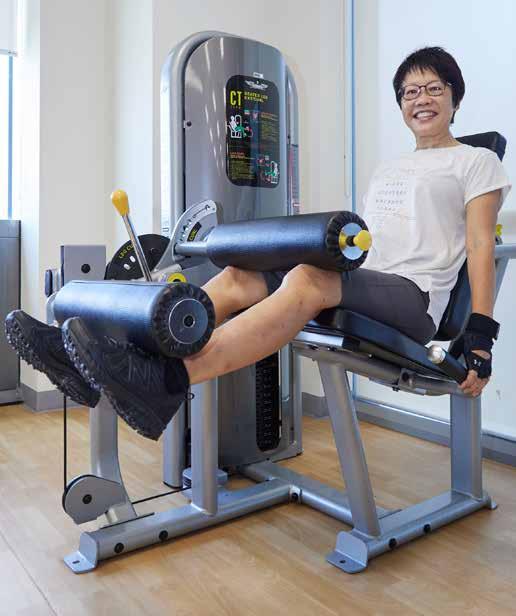
It’s much like fixing a cavity in a tooth. The dentist removes the decay and fills it with metal or another material. We’re doing something similar but on a larger scale with the knee. A more accurate term would be ‘knee joint resurfacing surgery,’ but we still use the old name — ‘replacement’ — out of habit.Dr Eric Liu Consultant, Department of Orthopaedic Surgery, Singapore General Hospital
Ms Diana Chin was diagnosed with medial compartment osteoarthritis. In her early 60s, she underwent proximal fibular osteotomy, a method of knee preservation.
Ms Chin, whose scar is barely visible, was able to walk the next day with the aid of crutches, and resumed her active lifestyle soon after.

the femur and tibia to rub against each other, causing pain and inflammation.
“The main aim of knee replacement is to reduce pain and improve function. It’s important to understand that as we age, x-rays often show signs of wear and tear,” Dr Liu said.
In a joint replacement surgery, or joint arthroplasty, the entire joint is not removed and replaced — just the damaged cartilage surrounding the joint, which is then covered with a metal surface. The femur and tibia are also preserved as much as possible. “It’s much like fixing a cavity in a tooth. The dentist removes the decay and fills it with metal or another material. We’re doing something similar but on a larger scale with the knee. A more accurate term would be ‘knee joint resurfacing surgery,’ but we still use the old name — ‘replacement’ — out of habit,” said Dr Liu.
TKR, also known as total knee arthroplasty, is a surgical procedure to replace the damaged or diseased knee joint with an artificial implant. It involves removing damaged bone and cartilage from the knee joint and replacing them with
metal and plastic components that mimic the natural knee joint.
TKR is typically recommended for patients with OA affecting the entire knee joint, significant deformity, or extensive damage to the three areas, or compartments, of the knee. It may also be recommended for patients with inflammatory arthritis, post-traumatic arthritis, or other conditions causing severe knee pain and functional impairment.
The success rates for TKR are generally high, but outcomes depend on patients’ age, overall health, severity of the arthritis, and rehabilitation compliance, said Dr Liu. “TKR implants are designed to last for many years, with the majority lasting 20 years or more,” he said.
TKR can significantly improve knee pain, function and mobility, and quality of life for many patients, while risks include infection, blood clots, implant loosening, stiffness, and nerve damage.
SGH performs more than 3,000 TKR surgeries each year, about half the 6,000 done every year in Singapore, Dr Liu said. TKR is performed as a day surgery at SGH for most patients.
In PKR, or unicompartmental knee arthroplasty, only the damaged portion of the knee joint is replaced with a prosthetic implant made of metal and plastic to restore the natural knee anatomy.
This procedure is typically recommended for younger patients and those with isolated unicompartmental knee osteoarthritis, where only one part of the knee is affected, usually the medial, or inner, compartment. “PKR can provide excellent pain relief and functional improvement for suitable candidates. Success rates are generally high, but long-term outcomes may be influenced by factors such as patient selection and implant longevity,” said Dr Liu.
As with TKR implants, PKR implants can last years — about 10 years for 80 per cent of patients. Longevity, though, may be influenced by factors such as the patient’s age and activity level, and the design of the implant.
With smaller incisions, PKR patients recover faster than TKR patients, and are able to return to normal activities about a month after surgery. They have improved joint function and a lower risk of infection, but have a greater risk of fracture during surgery. Should they need a TKR at a later time, conversion surgery is slightly more difficult than TKR on a native joint.
About 200 PKR procedures are performed yearly at SGH, far fewer than TKR surgeries.

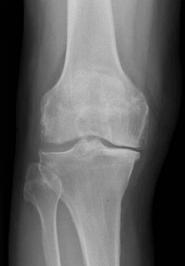


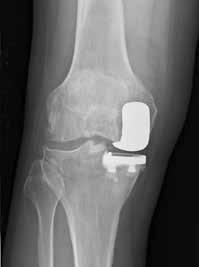

(Top, from left) X-ray images show a normal knee; unicompartment OA with some wearing on inner side of knee; and post-partial knee replacement.
(Bottom, from left)
Tricompartment OA with severe damage to both knees; and post-total knee replacement.
(Right)
Post-knee preservation surgery realigns the knee to take pressure off the damaged portion of the knee joint.
As its name suggests, this procedure preserves the patient’s own knee by realigning the shin or thigh bone to reduce the load on the damaged part of the joint, thus providing relief for patients with significant knee problems. KP is suitable for individuals who are under 60 years of age with moderate knee OA and a strong preference in maintaining an active lifestyle.
According to Dr Lee Kong Hwee, Senior Consultant, Department of Orthopaedic Surgery, SGH, knee implants used in PKR or



The most useful health app for all your needs!



APPOINTMENT
View and reschedule your appointments with ease!
PAYMENT
Pay anywhere, after consultation or treatment.
ORDER MEDICINE
Arrange for FREE delivery of your medicines!
TEST RESULTS & REPORTS
See all your test results here!
HEALTH TOOLS
Track your blood glucose, blood pressure, weight and more!


Mr Shoo How Beng (playing pickleball), in his early 70s, underwent total knee replacement surgery after battling severe knee pain for years. He was unable to bend his right knee because of knee flexion contracture of more than 10 degrees, an OA condition.
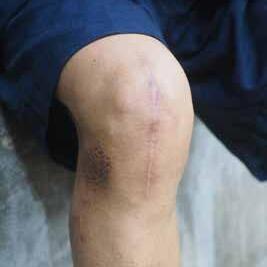

TKR may not be an ideal solution for younger patients as they may need another implant later on in life. KP surgery, however, not only addresses their knee OA problem, but may also help patients delay or even avoid the need for a knee replacement surgery in the future. “Should the arthritis advance for whatever reason, the patient can still go for a replacement; that bridge is not burnt,” said Dr Lee, who is also Director, Sports Service, and spearheads SGH’s Knee Preservation Service, set up in 2019.
Data show that 80 per cent of patients who underwent a type of preservation surgery known as high tibial osteotomy (HTO) did not need a knee replacement for at least 10 years after the surgery. In HTO, the surgeon creates a wedgeshaped opening in the upper portion of the shin bone via a small 4cm incision. A bone graft wedge is then inserted into the opening and secured in place with a titanium plate and screws to realign the knee and to take pressure off the damaged portion of the knee joint.

In his late 40s, Mr Simon Ng used to take part in leisure soccer and badminton until he was diagnosed with medial compartment OA, which caused his inner left knee to hurt. Mr Ng underwent partial knee replacement in 2023 and was discharged after two days.
Besides HTO, proximal fibular osteotomy (PFO) is another KP procedure commonly performed at SGH for patients who suffer from medial compartment OA. With medial knee OA, patients only feel pain in the inner part of the knee because the cartilage that covers the ends of the femur and tibia has been worn out. Thus, the bones rub against each other at the joint, causing the pain. PFO is a simple procedure that does not require implants, and is recommended for patients who have severe skin dermatitis, poorly controlled diabetes, or poor immunity. In PFO, 2cm of the patient’s fibula is removed to disconnect the support to the outer part of the knee, allowing for a more balanced distribution of weight across the entire knee joint, alleviating pain in the process. Patients are able to walk on the same day of surgery, and have minimal down-time.
Knee implants used in PKR or TKR surgery may not be an ideal solution for younger patients as they may need another implant in their lifetime. KP surgery, however, not only addresses their knee OA problem, but may also help patients delay or even avoid the need for a knee replacement surgery in the future.
Dr Lee Kong Hwee
Senior Consultant, Department of Orthopaedic Surgery, and Director, Sports Service, Singapore General Hospital
At SGH, KP procedures are gaining popularity. Since the methods were first offered as viable treatment options in 1999 and 2000, 400 KP procedures have been done by end of 2023, compared to 50 at end-2000.
While a joint replacement aims to restore the knee’s movement as much as possible, the resulting range of motion depends on its flexibility before surgery.
“You are likely to have greater flexibility after surgery, but not as much as someone whose knee was more flexible to start with,” said Dr Eric Liu, Consultant, Department of Orthopaedic Surgery, Singapore General Hospital (SGH). “If your knee was very stiff before surgery — if you couldn’t fully straighten your leg or bend it past 90 degrees — you might still have some stiffness afterward. It’ll likely be better than before, but you may not have as much flexibility as someone whose knee was more flexible to start with.”
Squatting requires the knee to bend quite a bit — more than 120 degrees. Most total knee replacement (TKR) implants available today are not designed to bend as much. “So, in theory, it might be tough to squat fully after surgery. But if you find you can do it without discomfort, there’s no harm in trying. If you are able to squat after surgery, consider it a bonus!” he added.
Partial knee replacement (PKR) patients may find squatting easier after surgery, as only the damaged cartilage on one side of the knee is replaced. The ligaments are not affected, unlike in total knee replacement (TKR) surgery, thus preserving the knee’s natural movement.

To reduce the incidence of high myopia in young adults, an optical imaging tool has been developed to identify at-risk children to prevent sight-threatening complications later in their lives.by Eveline Gan
More than just an inconvenience that can be corrected with optical aids, childhood myopia that is left unchecked increases one’s risk of sight-threatening complications later in life.
To combat this, researchers at the Singapore Eye Research Institute (SERI) and the Singapore National Eye Centre (SNEC) have developed an imaging tool that can tell if a child is at risk of developing high myopia, defined as short-sightedness of above -5 dioptres, or 500 degrees.
The diagnostic tool, triple-input polarisation-sensitive optical coherence tomography (TRIPS-OCT), uses novel polarimetric detection to assist ophthalmologists when making treatment decisions. This enables them to identify the best time for at-risk children to receive intervention.
Professor Leopold Schmetterer, Head of Ocular Imaging, SERI, shared that myopiarelated complications are currently the main cause of blindness and low vision in Singapore.
Recent studies report that up to 30 per cent of highly myopic patients develop complications, such as myopic macular degeneration and optic neuropathy, which can lead to irreversible visual impairment. Yet, identifying this high-risk group remains a challenge in clinical settings, making it difficult to determine who requires urgent treatment, he said.
Singapore’s myopia rate is among the highest in the world, with 65 per cent of children here becoming myopic by the age of 12, and 83 per cent of young adults are myopic. Recent studies estimate that one in five young adults has high myopia.
With these statistics, Prof Schmetterer said that it is essential to have a diagnostic tool capable of assessing the risk of high myopia. “There is an urgent need to address this issue because, while the majority of highly myopic patients are still young, it will become a major problem and cause of blindness in the future,” he said. “Such a tool would enable healthcare professionals to effectively stratify patients based on their risk levels.”
For example, if a child is identified as high risk for myopia, treatments such as topical low-dose atropine, orthokeratology or other approaches can be applied promptly. Low-risk individuals can be monitored without immediate intervention.
“TRIPS-OCT is particularly beneficial as it ensures that high-risk patients receive timely and appropriate treatment while also minimising unnecessary costs and interventions for those at risk. Given the widespread prevalence of myopia, the tool has the potential to significantly alleviate the overall burden associated with myopia vision care,” Prof Schmetterer added.
To predict high myopia, the imaging tool detects pathological changes in the sclera, the white part of the eyeball. The sclera is a dense, collagen-rich and mechanically strong tissue that coats the eyes and protects their internal structures.
On why the sclera was chosen as a predictive biomarker, Dr Liu Xinyu, Senior Research Fellow, SERI, and Assistant Professor, Duke-NUS Medical School, shared that increasing evidence suggests the posterior sclera playing a vital role in the progression of myopia, but there is currently no known method to inspect this part of the eye. The research team has successfully developed a rapid and non-invasive imaging
technology, the TRIPS-OCT, which enables ophthalmologists to safely identify at-risk children.
“Sclera ultimately determines the elongation of the eye, which is the cause of myopia. While there are other biomarkers to consider — such as axial length, refractive error, parental history of myopia, and genetic factors — the medical imaging of sclera is the most direct and significant biomarker from a pathological perspective,” Dr Liu said.
“Given the widespread prevalence of myopia, the tool has the potential to significantly alleviate the overall burden associated with myopia vision care,” says Prof Leopold Schmetterer.


Initial results of the study, published in Nature Biomedical Engineering in June 2023, reported an accuracy of 85–90 per cent. For longer term results, the researchers will start longitudinal studies among two cohorts of children — aged 6–8 years and 11–13 years respectively — for two years. The researchers are also currently developing techniques to enhance the imaging performance of the tool, Dr Liu shared.
According to SNEC, there is potential for the tool to be implemented in primary care settings, such as consultations with optometrists and general practitioners, who can then provide further advice for a referral to a specialist if necessary.
Dr Liu Xinyu says that TRIPS-OCT uses the sclera as a predictive biomarker because increasing evidence suggests that it plays a vital role in myopia progression.
Having good eye-care habits from a young age can help children maintain healthy eyesight:
Encourage outdoor activities and play daily. For example, playing ball games outdoors or spending time exploring nature lets the eyes focus on a wide range of near and far objects.
Plan a daily home schedule for your child so that there is time — around one to two hours — allocated for outdoor activities. Avoid or reduce screen time exposure, which increases myopia risk. Try audio books if your child is an avid reader. Take frequent eye breaks from near work. Do this by looking out of the window into the distance every 20–30 minutes. Read with good or natural lighting (near a window, for example).
Refrain from lying down to read or reading in moving vehicles.
Sources: SNEC; Professor Leopold Schmetterer, Head of Ocular Imaging, SERI

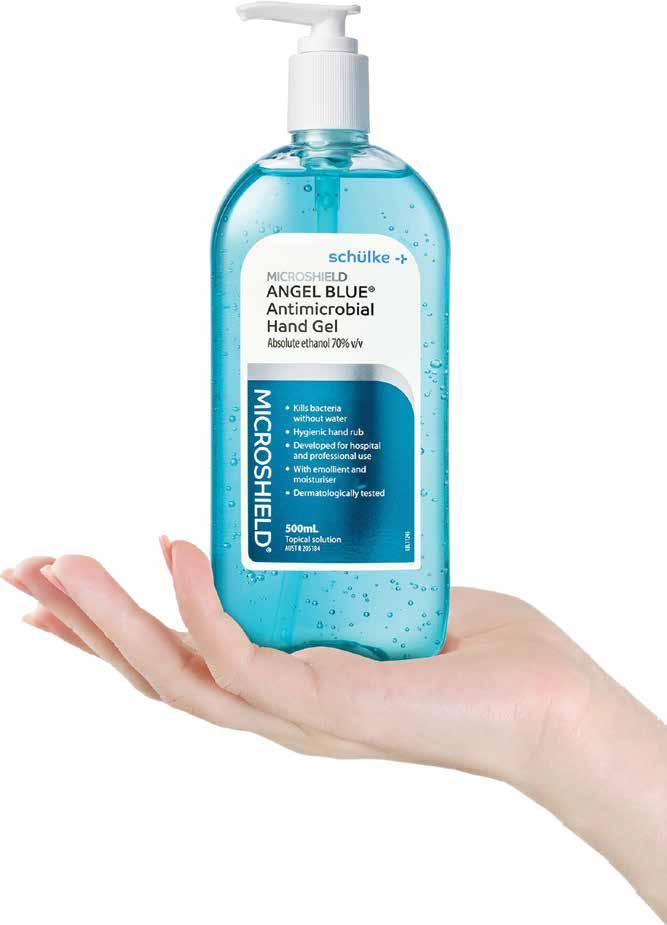



AI-powered tools like ChatGPT can aid patients in understanding heart diseases better, but any advice it dispenses should be reviewed by a medical professional.by Timothy Wee

Technology has transformed the way people learn. Since the birth of the internet, people have taken to search engines to seek information on a wide range of subjects. When it comes to finding out more about a disease, its symptoms and treatments, one usually has to sift through pages of unverified information.
“The performance of ChatGPT currently is insufficient to replace the role of a healthcare provider in delivering personalised health advice and management,” says Dr Samuel Koh (below, left).
Today, with user-friendly interfaces and simple-to-understand conversational language, free artificial intelligence (AI)-powered tools like Chat Generative Pretrained Transformer (ChatGPT) are shaking things up.
In Singapore, medical collaborations with natural-language AI models are taking off. A National Heart Centre Singapore (NHCS) research team — whose members include Dr Samuel Koh, Senior Resident, and Clinical Associate Professor Jonathan Yap, Consultant, Department of Cardiology (below, right) — decided to evaluate how well ChatGPT can provide adequate explanations

to patients on common procedures and conditions. In an article entitled ‘Leveraging ChatGPT to aid patient education on coronary angiogram’ published last July in Annals of the Academy of Medicine Singapore, Dr Koh and his team suggested that heart disease patients may seek information through the large language model regarding their condition. Dr Koh said: “ChatGPT is the next game changer through its interactive and conversational style, summarising facts in simple language suitable for the layperson.”
Given the high rates of ischaemic heart disease and heart failure in Singapore, the research team focused on common conditions and procedures such as coronary angiography and heart failure. Among the many benefits, they found that ChatGPT provided jargon-free answers that a layperson would find easy to understand. ChatGPT’s responses to heart disease questions were also presented in an organised, in-depth manner.

Despite this, the team was quick to stress that ChatGPT, in its current form, has its drawbacks. “The performance of ChatGPT currently is insufficient to replace the role of a healthcare provider in delivering personalised health advice and management,” said Dr Koh.
“Information taken from ChatGPT needs to be verified with a healthcare professional.” This is because ChatGPT at times produced significant factual inaccuracies. For instance, the team noted that ChatGPT’s answers regarding coronary angiogram incorrectly listed the risks associated with angiography.
The team also noted that ChatGPT omitted several recommendations that would have been addressed in a consultation. For example, it did not factor in non-cardiac causes of chest pain and breathlessness when asking about symptoms of heart disease and the need for a coronary angiography.
Most importantly, ChatGPT lacked the human touch of a physician. This was a finding of a paper co-authored by Dr Koh and Clinical Associate Professor David Sim, Head and Senior Consultant, Department of Cardiology, NHCS (‘Educating patient with advanced heart failure through chat generative pretrained transformer and natural-language artificial intelligence: Is now the time for it?’, published in Journal of Palliative Medicine in July 2023). ChatGPT’s responses were “generic” and “failed to take into account the specific circumstances of the individual”. End-of-life planning calls for more empathetic and humanistic approaches, but ChatGPT was unable to manage the user’s emotional response and acknowledged its own limitation by saying that it had no intent to provide religious or spiritual guidance involved in end-of-life planning. Therefore, the team recommended that patients discuss such topics with their doctors and palliative care specialists.
ChatGPT, while somewhat useful, cannot replace a qualified medical professional. Despite ChatGPT’s current limitations, its ease of access, user-friendly interface, and quality of answers make it a potentially helpful adjunct in the care and management of patients.
New programme for diabetic ulcers ensures quick treatment for most patients in outpatient clinics without the need for a hospital stay.by Thava Rani
Prof Chong Tze Tec, in a staged ultrasound scan, says diabetic ulcers, which do not heal well, can lead to amputations.
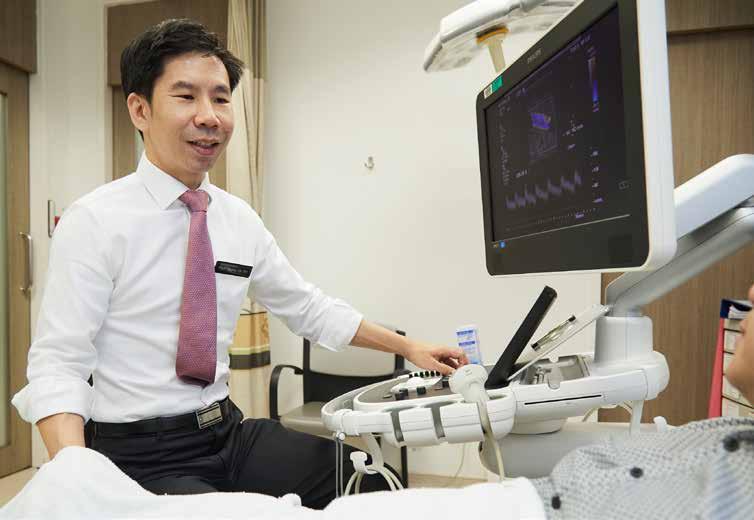
In the past, diabetes patients visiting Singapore General Hospital’s (SGH) Emergency Department with foot ulcers were automatically admitted for treatment by specialists.
While this ensured that serious ulcers were quickly seen to, it meant that those with minor wounds were ushered into admission, taking up beds that could have been given to those with more urgent needs.
Since 2022, however, only those with an urgent need to be treated in hospital were admitted while the others were cared for in outpatient clinics under a new structured programme called Rapid Access FooT, or RAFT.
“We know that diabetic foot ulcer is the tail end of end-stage diabetes, and patients with ulcers have a major risk of amputation,” said Professor Chong Tze Tec, Senior Consultant and Head, Department of Vascular Surgery, SGH, noting that 25 per cent of foot ulcer patients underwent amputations a year. “I wanted to improve the outcomes for diabetic foot ulcer patients by giving them quick access to us without having an impact on the already tight hospital bed situation. So RAFT lets us pay more attention to this group of patients by giving them some extra special help and attention through a fast track to a specialised clinic.” Patients are usually
admitted for one to two days, sometimes more if their condition requires follow-up consultations with specialists, wound care and dressing changes, and antibiotic infusions.
Patients with end-stage diabetes are prone to foot ulcers, which is an open wound arising from poor blood circulation or from a lack of sensation caused by nerve damage. There is also a risk of the wound becoming infected. A non-healing diabetic ulcer can lead to the toe or foot needing to be amputated. Immediate attention is therefore necessary in patients with diabetic foot ulcers at any stage to prevent amputations.
Patients coming to the RAFT clinic are seen by a multidisciplinary team starting with a vascular surgeon. They may then be referred for a same-day ultrasound scan to assess the blood supply to the leg. If there are blockages, interventional radiologists or other vascular surgeons are called in to perform a revascularisation procedure to restore blood flow to the leg. Nurses are on hand to help with wound care and dressing. A podiatrist may then provide customised footwear to decrease pressure on the wound while walking, thereby encouraging wound healing. If diabetes control is poor, an endocrinologist may get involved to advise on adjusting the dose or changing the medication. All these are seamlessly
organised to happen within the same day or the next business day.
While the RAFT clinic is a dedicated service for diabetic patients, it does not turn away non-diabetic patients with foot ulcers should they be referred to the clinic. The clinic currently receives referrals from the SGH Emergency Department, as well as from SingHealth polyclinics and a network of general practitioners. It saw 54 patients in 2022, which more than doubled to 128 patients in 2023.
More patients also avoided being admitted. In 2022, only 16.7 per cent of patients with diabetic foot ulcers needed hospital admission, which dropped to 13.3 per cent in 2023. “These would have been 100 per cent in the past as they would all have been admitted. So, we saved about 85 per cent of patients from being admitted, but still gave them the full care in an expedited fashion,” said Prof Chong. This makes a big difference for diabetic foot ulcer patients as they tend to be older and may feel uncomfortable in an unfamiliar environment. If hospitalised, communication may be difficult due to the language barriers, or they may simply be averse to hospitals. “So, for those who are not actively infected and are in no urgent risk for amputation, the outpatient setting at the RAFT clinic is a perfect fit,” added Prof Chong.
“For those who are not actively infected and are in no urgent risk for amputation, the outpatient setting at the RAFT clinic is a perfect fit,” says Prof Chong.
Oral Health Therapist Ms Yap Xin Ying shares about her job scope and how it has recently been expanded to cater to the growing needs of an ageing population.
by Candice Cairal Health Therapists (OHTs) are not dentists-in-training. In fact, OHTs are qualified dental professionals who provide comprehensive care to patients,” shared Ms Yap Xin Ying, Principal Oral Health Therapist, National Dental Centre Singapore (NDCS). She aims to bust this common misconception.
OHTs work alongside dentists. It is a job that Ms Yap, who joined the profession in 2009 after graduating from Nanyang Polytechnic, is immensely proud of. “I enjoy making a positive impact on patients’ lives by helping them achieve healthier smiles and improved overall well-being,” she said.
Unlike dentists, who primarily diagnose and treat dental issues, OHTs champion preventive dental care. They educate patients on oral hygiene, and proper ways to care for their teeth and dental appliances such as braces and dentures.


Ms Yap Xin Ying says that her job scope as an OHT sometimes overlaps that of dentists. This includes seeing patients for dental prophylaxis, which involves teeth scaling and polishing to remove plaque and tartar. OHTs also educate patients on oral hygiene, and proper ways to care for their teeth and dental appliances.
I feel happy when my patients’ gums are no longer bleeding or if they notice that their breath has freshened up.
Ms Yap Xin Ying
Principal Oral Health Therapist, National Dental Centre Singapore
Their job scope sometimes overlaps that of dentists. This includes seeing patients for dental prophylaxis, which involves teeth scaling and polishing to remove plaque and tartar. OHTs are also well-qualified to perform tasks such as extractions and restorations of primary teeth for those aged 18 and below.
OHTs also take dental radiographs that dentists use for diagnosis and treatment planning. They can refer patients to specialists when necessary, ensuring that patients receive appropriate and comprehensive care.
In recent years, OHTs have been increasingly involved in managing the growing dental care needs of older patients in a fast-ageing population. Since 2022, SingHealth’s OHTs have expanded their role to provide independent oral assessments and basic dental treatment in Intermediate and Long-term Care facilities (ILTC).
“Our enlarged job scope means patients can have their oral health taken care of, and see the dentists only when they require more complex dental or surgical procedures.” The move is also a positive one, according to Ms Yap, as it allows OHTs like herself “to better meet the evolving needs of patients and contribute to the population needs in Singapore”.
Now, OHTs can assess and triage patients, and efficiently allocate resources and direct individuals to the appropriate care pathways. They can also perform post-surgical wound management and suture removal, which helps in streamlining the recovery process and promote optimal healing outcomes. Patients can expect services and procedures, including intra-oral 3D scanning, and orthodontic debanding procedure for patients who have completed orthodontic treatments.
To satisfy the requirements of the expanded job scope, NDCS has developed a training programme to prepare SingHealth’s OHTs to perform procedures competently. The programme includes lectures, practical face-to-face workshops, and competency assessments.
Being an OHT, however, comes with its own unique set of challenges. “Motivating patients to adopt and maintain good oral hygiene habits, and managing time efficiently to provide thorough care to each patient is something I have to do daily.”
Dental visits can be stressful for some patients, and Ms Yap helps to manage their mental and emotional roadblocks. “The most challenging cases I have seen often involve complex periodontal issues or patients with significant dental anxiety. They will require specialised techniques to effectively manage their care with patience and empathy,” she said.
Naturally, what gives Ms Yap most fulfilment in her job is seeing her patients return with positive feedback — and a more brilliant smile — after following her advice. “I feel happy when my patients update me that their gums are no longer bleeding or if they notice that their breath has freshened up.”
An important, albeit surprising, dental tip that Ms Yap wants everyone to know is that brushing your teeth twice a day is simply not enough. “Most patients do not realise that tooth brushing alone is not sufficient. We need to floss or use interdental brushes to clean between our teeth daily to reduce bacteria build-up. This helps prevent tooth decays and gum diseases.”
Associate Professor Nigel Tan, who was conferred the 2023 National Outstanding Clinician Educator Award, shares the key characteristics of a good educator in healthcare.
by Chua Kim BengBeing a good educator is not merely about good teaching, stated Associate Professor Nigel Tan Choon Kiat, Senior Consultant, National Neuroscience Institute (NNI). “It’s about promoting learning through careful application of education theories — learning, psychology and human behaviour, and systems.” He added that being a good educator also means being


“One of the reasons why the learning in NNI was so rich was because we had Associate Professor Loong Si Chin as our teacher,” says Assoc Prof Tan, pictured here with his mentor.
Being a good educator is about being a fair assessor, being collaborative and collegial with colleagues, and about equity for learners and faculty.
AssociateProfessor Nigel Tan Choon Kiat Senior Consultant, National Neuroscience Institute
a fair assessor, being collaborative and collegial with colleagues, and having the humility to receive knowledge and guidance from people with expertise in areas one does not possess.
“Part of me always enjoys the new and the novel,” Assoc Prof Tan shared when asked about why he enrolled in the Masters in Health Professionals Education programme from the Massachusetts General Hospital Institute of Health Professions in 2011.
He was part of the pioneer cohort to take the two-year course. “I felt that the Masters would help me develop a stronger theoretical grounding in education, beyond just being a good teacher.”
The Masters course was challenging for Assoc Prof Tan, who has a biomedical background. “It was hard to embrace the ways of thinking in the social sciences, which a lot of education is grounded in. But the struggle was worth it, as it helped me become a better educator,” he said.
Before the Masters course, Assoc Prof Tan, who is SingHealth’s Group Director of Education (Undergraduate), had already been teaching since he became NNI neurology registrar in 1999; he was one of the first two registrars hired in NNI. “The learning environment in NNI was — and still is — wonderful,” he said. “What I really
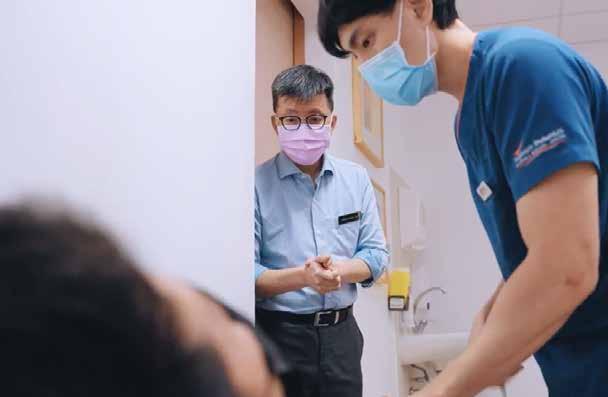
“It is a duty for all of us in the public sector. Despite these responsibilities, our healthcare educators have risen to the task,” says Assoc Prof Tan on the need to train the next generation of healthcare professionals.
enjoyed was the peer learning between neurology and neurosurgery.”
What inspired him to go deeper into medical education was an exemplary teacher. “One of the reasons why the learning in NNI was so rich was because we had Associate Professor Loong Si Chin as our teacher,” shared Assoc Prof Tan. He described the late Assoc Prof Loong, who passed away in 2022, as someone who was superb at making the complex appear simple. “That ability to explain things simply and clearly was so helpful for all of us.” Prof Loong also exemplified the values of a good educator — he was always patient, a good listener, lifelong learner, and took on a collegial approach in education. “I know I was definitely inspired by him to become an educator, and I’m sure I’m not the only one.”
When asked if he and his team ever feel the weight of teaching the next generation of healthcare professionals, Assoc Prof Tan said: “It is a duty for all of us in the public sector. Despite these responsibilities, our healthcare educators have risen to the task.” He affirmed that SingHealth is doing well in providing effective education “in terms of the number of learners who come through our doors, and the positive feedback we get”.
However, there are areas that need work. “Managing faculty’s education and clinical workload, better embodying clinical competencies and educator values, being more interprofessional in our education practice, reinforcing educator identity, and strengthening our educator community of practice — these would be my goals in my current role,” he said.
It is no wonder that Assoc Prof Tan went into healthcare, under the positive influence of his parents, who are a now-retired general practitioner and midwife. “Healthcare offered a chance to engage the head and heart, to meld art and science to help people,” he said. “This seemed to my 19-year-old self to be a pretty good basis to build one’s life upon.”
What about picking neurology as his specialty? “There was a geeky intellectual aspect to neurology that appealed to me, and making a diagnosis with complex patients was exciting,” said Assoc Prof Tan. At the time, neurology was transitioning from an “all diagnosis, no treatment” specialty to one with new and exciting treatments that will help patients. “This made our work very meaningful.”
At home, Assoc Prof Tan has a valuable partner in life. “My wife is a surgeon-educator who is in SingHealth, too. We often have interesting discussions about education,” he quipped. Together, they have three children. “We are quite a geeky family with eclectic interests; dinner discussions often span a variety of topics including pop culture, linguistics, food, sociology, marketing, and more. I learn quite a lot from my children, too.”
A self-confessed nerd, Assoc Prof Tan said that, had he not become a doctor, he would have enjoyed being a music or film critic. He also believes in the benefits of exercise. “I find exercise to be tremendously helpful in managing work stress. I go running or brisk walking with a weighted vest, combined with some light resistance exercises a few times a week. It’s amazing how solutions appear when your brain gets flooded with endorphins.”


Instead of just giving patients medical treatment, imagine being able to improve their lifestyles or address their emotional needs. It’s called social prescription.
by Associate Professor Gan Wee Hoe (inset, above), CEO, SingHealth Community Hospitals; and Associate Professor Lee Kheng Hock (inset, below), Deputy CEO (Education and Community Partnerships), SingHealth Community Hospitals
After one fall too many, the 70-year-old’s hip bone, ravaged by decades of unhealthy lifestyle and poor nutrition, finally broke.
This article was adapted from The Straits Times (‘Art therapy and befriending services: Doctors should prescribe these in some cases’).
More than bones were broken. The familiar rhythms of her life were shattered as simple activities — such as getting out of bed, going to the toilet, and going downstairs to her favourite coffee shop for breakfast — were now impossible without another person’s help. Family members had to reorganise their lives to care for this once happy and independent person, who became demoralised, helpless and trapped within her flat.
Our healthcare system prevented an untimely death, and broken bones were healed with state-of-the-art surgery, but
there were so many regrets and what-ifs before and after the fall.
The question that looms largest is: Could a different form of care or advice have prevented the fall altogether or at least made the 70-year-old’s bones less brittle?
The answer, it so happens, is “yes” — if the elderly woman had been in touch with a doctor who did not merely prescribe medication but addressed her lifestyle and the social fabric of her life. Or if not a doctor, then some other professional. The good news is that such a system is on the cards and could make life easier for Singapore’s elderly.
Every month, there are more than 40,000 admissions to Singapore’s public sector acute hospitals. The proportion of patients aged
65 and older admitted to public healthcare institutions has climbed from 28.6 per cent in 2006 to 39 per cent in 2020. By 2030, the elderly group is expected to make up 58 per cent of all hospital admissions.
Older people with multiple health problems are more likely to experience disease complications and functional failure, thereby consuming more healthcare resources. This, combined with a shrinking demographic base of economically active persons, is why an ageing population can place a disproportionate burden on a country.
We often measure the impact of ill health through direct healthcare costs.
In a report on the cost of healthcare for Asia-Pacific’s elderly by Marsh & McLennan Companies, the healthcare expenditure
per elderly person is projected to increase 4.6 times, from US$8,200 (S$11,000) in 2015 to US$37,400 in 2030.
These numbers do not even take into account the indirect, social cost of ill health — such as the informal care by family members with potential loss of income, and the pain, suffering and isolation on the part of the elderly.
Given our population trends, we need to urgently re-examine our model of care in Singapore. We can even see the direction it may take.
In his Committee of Supply speeches in 2022 and 2023, Health Minister Ong Ye Kung mentioned the term “social prescription”. He highlighted that “doctors are saying social prescriptions are more important than drug prescriptions”, and that there is “community support to make social prescription possible”.
So what exactly is this novel approach and is it going to help us alleviate Singapore’s healthcare burden over time?

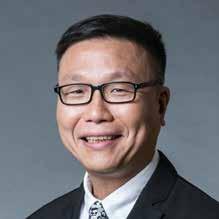
A landmark study published in the American Journal of Preventive Medicine in 2016 evaluated the impact of four factors — clinical care, healthy behaviours, physical environment, and socioeconomic conditions — on health outcomes (length and quality of life). It found that clinical care only accounted for 20 per cent of health outcomes. Social determinants of health accounted for the remaining 80 per cent. This means that, in developed countries such as Singapore, factors such as enabling health-promoting behaviours and preventing social isolation are more important for the health of the elderly than just clinical care. This is what “social prescription” is about.
In the 1980s, the local community in Tower Hamlets in north-east London set up a community services facility known as the Bromley by Bow Centre. This was to address the health inequality and socioeconomic challenges faced by the people living in one of the most deprived areas in England.
Bromley by Bow Centre brought together general practice with community services in childcare, adult learning, and social enterprise, among others.
This concept is premised upon the observation that many people often visit their doctor for social issues as they do not know where and how to access such support. Now a globally renowned centre, it has seamlessly connected people to non-medical resources and improved their well-being while reducing the burden on healthcare resources.
This approach is also catching on, from the United States and Europe to the Asia-Pacific.
The World Health Organization defines social prescribing as a means of connecting patients to a range of non-clinical services in the community to improve their health and well-being.
In this paradigm, doctors do not just order tests, dispense pills, or perform surgery, but also look at the social factors affecting a patient’s well-being
For example, in the case of an elderly person who suffers from frailty and recurrent falls, social risk factors such as loneliness and difficulty accessing transportation options may be uncovered during the medical consultation.
This will prompt the doctor to refer the patient to a community link worker, who can connect the patient to community support agencies such as a befriending service. Apart from reducing the elderly person’s loneliness, befrienders willl also be able to facilitate and accompany the patient for medical appointments.
Social prescription may also include linking the patient to financial assistance or to specific programmes such as art therapy.
What’s more, the concept seems to work. In one study in Britain, an investment of £1 (S$1.70) in social prescription yielded a return of £3.42. Another study showed that healthare cost was 27 per cent lower in patients who received social prescription. Such patients also had better mental health.
This approach has been gaining traction in Singapore since just before the turn of the decade. With the pivot to empower Singaporeans to take proactive steps to manage their health (Healthier SG), social prescription may well prove to be the game changer.

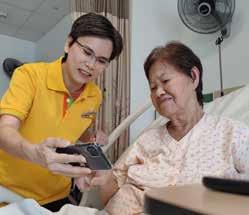
The question is: Who will helm this system in Singapore?
It may not be ideal to assign healthcare professionals as community link workers, given the shortage of healthcare workers we face and the workload they are already bearing.
We have to look at other options. For example, in SingHealth Community Hospitals (SCH), non-clinical staff known as well-being coordinators are trained to administer social prescriptions for patients, connecting them to a range of resources in the community based on personalised needs to support healthy living, better social connections, and active ageing. These may seem to be small, nonmedical interventions, but they may well hold the power to rewrite the narrative of illness.
Plans are underway to support general practitioners (GPs) with social prescriptions, which can be included in the health plans for patients under Healthier SG. These can be shared with well-being coordinators, who will administer them.
Social prescription fits well with the Healthier SG initiative, which recognises that preventive care and community engagement enable good health.
Returning to the case of our 70-yearold patient who broke her hip bone, early enrolment in Healthier SG would have enabled her to receive regular healthchecks and subsidised screening tests. An early diagnosis of osteoporosis (low bone mineral density) and high fall risk would prompt the GP to prescribe both medical and social interventions, potentially preventing serious medical events such as factures.
From the health system perspective, social prescription can help bend the cost curve in the medium to long term. It also empowers the individual to take action and achieve better outcomes in health and well-being.
In this changing paradigm, health interventions are no longer restricted to medical prescription and surgery.
A big component will be the ability to identify frail and lonely seniors and connect them to a community activated to support them; or to help a struggling family access resources that can tide them over their difficulties and enable them to bounce back.
Social prescription has the power to prevent illness before it takes root, and to make our healthare system sustainable. It is not a fad, but the missing piece of the puzzle that will transform our healthcare landscape. It is an investment in our collective well-being.
In 2023, SCH launched the Singapore Community of Practice in Social Prescribing, which serves as a hub to harness the collective knowledge and expertise of the learners and practitioners from the various sectors, foster a culture of collaboration and innovation, and drive continuous improvement in the learning and practising of social prescribing. Find out more at www.socialprescribing.sg
Polycystic ovary syndrome is a common but treatable hormonal disorder.
Early treatment can change the course of the disease.by Goh Bee Lian
It may be one of the most common conditions affecting women, but diagnosis can be difficult. At least two symptoms must be usually present before further tests are ordered to confirm polycystic ovary syndrome, or PCOS, as it is commonly known.
Irregular periods, raised male hormones, excessive body hair, acne and infertility are some of the signs of the endocrine disorder. “Girls usually come to us with irregular periods, sometimes with excessive hair growth and acne. But we try not to diagnose the condition when patients are children, because it’s common to have some amount of irregularity when they have their periods in the first few years,” said Dr Hemashree Rajesh, Senior Consultant, Department of Obstetrics and Gynaecology, Singapore General Hospital (SGH). Irregular periods can be due to other causes such as thyroid or adrenal disorders, and excessive secretion of prolactin, the milk protein. “So before we diagnose a patient with polycystic ovaries, we have to make sure that they do not have any of these,” she added.
As the name suggests, women with the condition have many tiny cysts in their ovaries. So patients may have to undergo ultrasound tests that use sound waves and a computer to generate images of blood vessels, tissues and organs to assess the size of the ovaries and check whether cysts are growing there. The test can also look at the thickness of the lining of the uterus.
Because many women with ovaries that look polycystic on ultrasound have regular periods, yet do not have PCOS, doctors look for additional symptoms, such as raised hormone levels, severe acne or excessive hair growth before coming up with a diagnosis. A patient’s blood can be drawn to test for

abnormal levels of the male androgen and other hormones, blood glucose, cholesterol and triglyceride. Elevated levels of male hormones can lead to excess facial and body hair, as well as severe acne.
What causes PCOS? “We think there could be a genetic component, but there are also many associated lifestyle factors. PCOS does not cause patients to put on weight, but those who put on weight tend to exhibit more symptoms of polycystic ovaries; if they then lose weight, there is some reversal. It’s predominantly genetic, and worsened by lifestyle factors,” said Dr Rajesh, who noted that South Asian women tend to be at higher risk of PCOS. It is not just obese patients who develop polycystic ovaries. Patients who have so-called thin polycystic ovaries do not show significant weight gain.
Patients with PCOS may be more prone to conditions such as infertility and, later in life, complications like heart disease, diabetes, depression and sleep apnoea.
Women who ovulate regularly experience elevated levels of oestrogen in the first half of the menstrual cycle, and progesterone in the second half of the menstrual cycle. When their periods are irregular, their bodies tend to make too much of male sex hormones
like testosterone. Hormonal imbalance makes women more prone to issues like cancer of the lining of the womb. Being unable to ovulate regularly also means they will not be able to conceive, and they will be prescribed medications to help with ovulation. Indeed, said Dr Rajesh, PCOS is a major cause of infertility.

Nevertheless, PCOS is a common and treatable condition, and early detection and lifestyle modifications can help symptoms. “We try to tailor the treatment to the symptoms. Women with hormone imbalances seeking to conceive may be prescribed ovulation induction agents. Those with excessive hair growth may be put on contraceptive pills to minimise their male hormones,” said Dr Rajesh.
Dr Rajesh has seen patients as young as in their 20s with cancer of the uterus who need to be on long-term treatment due to polycystic ovaries. “We hope that, by highlighting the symptoms to look out for, patients can seek professional medical help early and not wait for the end stage,” she said.
“We think there could be a genetic component, but there are also many associated lifestyle factors," says Dr Hemashree Rajesh on the causes of PCOS.

Established in 2010, SingHealth Duke-NUS Transplant Centre (SDTC) comprises 12 transplant programmes: heart, lung, kidney, liver, cornea, pancreas, kidney, ovarian tissue, blood stem cell (adult and paediatric), umbilical cord blood and SingHealth Transplant Tissue Centre (STTC) for skin and cardiovascular homograft. It is also one of the largest and most experienced transplant practices in the region, providing comprehensive and quality care to patients and donors.
The Singapore General Hospital (SGH) Burn Centre, which STTC serves, treats about 200 patients yearly for burn injuries. About 10 per cent of them sustained major burns, with skin taking the brunt of injuries. In such severe burn cases, human skin donated by deceased donors can be used to quickly cover large area of burn injuries of these critically ill patients with little of their own healthy skin left. But unlike heart, liver, kidney and cornea, skin donation is not so commonly known.
“Skin transplant can be life-saving. Unlike other organ transplants, it is not a permanent procedure as donor skin is not left on the patient for life,” said Dr Cheryl Hui Li Yu, Consultant, Department of Plastic, Reconstructive and Aesthetic Surgery, SGH. “It is used as a temporary dressing to stabilise the patient and tide them through the critical period before doctors can use the patient’s own skin on their wounds.”
There are alternatives to human donor skin to treat burns such as synthetic dressings made from polyurethane and biological dressings from non-human sources, including sheep, fish and pigs. However, there are many advantages when donor skin is used. Like-forlike, donor skin is from human origin and the tissues are more pliable and less fragile. “We prefer to use human cadaveric skin as it tends to be thicker and provides a better barrier to minimise moisture and skin losses that many burns patients experience. This results in less risk of infection,” said Dr Hui.
Skin is recovered from deceased donors within 15 hours of death. The SGH Skin Bank recovers, stores and provides donated human skin for severe burns patients. The recovered skin can be stored for up to five and a half years.
“While the skin donation process may sound very invasive, it is not so,” said Ms Ho Wen Ning, Transplant Coordinator, SGH Skin Bank. “We recover the superficial layer of the skin, around 0.4mm, which is around the thickness of a name card. Only concealed areas of the body — back and lower limbs — will be taken, so an opencasket funeral for the deceased donor will still be possible.”
Unlike the kidney, liver, heart and cornea, skin donation is not covered under the Human Organ Transplant Act (HOTA) opt-out donation scheme. Skin, instead, comes under an opt-in scheme that requires a person to make a pledge under the Medical (Therapy, Education and Research) Act, or MTERA. Next-of-kin can also consent to donate their loved one’s skin upon his/her passing.
During Deepavali in 2022, Ms Maygalai was helping her daughter put on shoes when her skirt caught fire from an oil lamp nearby. This led to her suffering almost 90 per cent burns across her entire body — only her head, face, scalp and parts of her neck were spared.

“The rest of her body was deeply burnt. Her blood circulation was compromised because the burns were deep and constricting blood flow to her legs. We had to perform an emergency escharotomy to release all the burnt tissues,” said Dr Hui.
As Ms Maygalai was critically ill when she arrived at the hospital, she was immediately sent to the Burns Intensive Care Unit. A few days later, her condition stabilised and simple dressings were used on her burns to reduce the operating time. Donor skin was introduced to allow her wounds to be dressed more efficiently and promote healing while reducing the risks of infection.
“Donor skin has contributed much to the healing process as it has given my body time to recover and move to the next stage of skin grafting using my own skin from other unburnt parts of my body such as my scalp,” said Ms Maygalai. “I’m really grateful to have gotten back the use of my hands. I am able to get back to work as well as take care of my child. To those who have donated, I’d really like to express my heartfelt thanks.”
Although her skin treatment has been completed, Ms Maygalai continues to go for physiotherapy. “I’m still walking with a cane. Improving my mobility is my main focus right now,” she shared, adding: “I, too, was previously unaware that there’s such a thing as skin donation. I would strongly urge everyone to consider it as it can make a difference and save someone’s life.”

“Skin transplant can be life-saving. Unlike other organ transplants, it is not a permanent procedure as donor skin is not left on the patient for life,” says Dr Cheryl Hui Li Yu (below, left). Ms Ho Wen Ning (below, centre) adds that, while the skin donation process may sound very invasive, it is not so. Skin transplant recipient Ms Maygalai (below, right) shares: “I was previously unaware that there’s such a thing as skin donation."

Ingredient
• 500g pork spare ribs
Pork rib seasoning
• ½ tsp salt
• 2 tsp oyster sauce
• 1½ tbsp sugar
• 1 tbsp coffee powder
Coffee sauce
• 500ml low-fat milk
• 2 tbsp coffee powder
• 3 tbsp sugar
1 Mix pork rib seasoning ingredients and marinate pork ribs overnight in the refrigerator.
2 Roast the pork ribs in a preheated oven at 175°C for 30 minutes.
3 Heat a wok and mix the ingredients for the coffee sauce.
4 Add pork ribs and cook until sauce is thick and coats the ribs.
5 Adjust seasoning if necessary and serve hot.
4 servings

There are various types of pork cuts available for cooking and they all contain different amounts of fat. For example, 100g of pork spare ribs (without bone) has 23g of fat, compared to 100g of lean pork, which has only 7g of fat. So make the right choice and go for leaner cuts!

If you are looking to lose weight, cut down on added sugar by drinking fewer cups of sweetened tea and coffee. Halve the amount of sugar specified in recipes for cakes, pastries and cereals. Substitute sugar with fruits, which increase your fibre intake. You can also add spices to make up for the loss in flavour caused by the reduced sugar usage.
Inflammatory bowel disease (IBD) can be highly debilitating and potentially life-threatening, unlike the more innocuous irritable bowel syndrome, which has similar symptoms.
by Dr Malcolm Tan Senior Consultant, Department of Gastroenterology and Hepatology, Singapore General HospitalUlcerative colitis affects the lining of the large intestine or colon
Crohn’s disease affects the intestinal tract, most commonly the last part of the small intestine (ileum) or the large intestine (colon and recturm)
Inflammatory bowel disease (IBD) refers to disorders involving long-term or chronic inflammation of the digestive tract. Ulcerative colitis and Crohn’s disease are the two main types of IBD, which can involve organs other than the digestive system, affecting the joints, skin and eyes.
3,000 estimated number of people in Singapore who have IBD
16–40 years age range in which IBD is most commonly diagnosed
An auto-inflammatory disease where the body’s immune system mounts an inappropriate response against the digestive tract, IBD increases the risk of colon cancer and need for surgery, especially if the inflammation is not well controlled. Up to 50 per cent of patients with Crohn’s disease and 30 per cent of patients with ulcerative colitis require at least one disease-related surgery in their lifetime.
Once considered a Western disease, IBD is increasingly common in Asia. A modern diet, smoking, exposure to antibiotics, and environmental factors are thought to contribute to the rise of IBD.
Blood tests include full blood count, C-reactive protein, kidney panel, liver panel, vitamin B12, folic acid, and iron levels
Stool tests for presence of bacteria through stool culture, microscopy, Clostridioides difficile PCR and calprotectin XCT (computed tomography) and MRI (magnetic resonance imaging) scans of abdomen, pelvis, small intestines to check for inflammation
Endoscopy, colonoscopy to obtain tissue biopsies for microscopic examination
IBD cannot be cured, but it can be well controlled with anti-inflammatory drugs and other medications, and by following a healthy lifestyle and diet.
Even when it is in remission, patients should continue taking the medications prescribed, and have regular blood tests, imaging and endoscopy checks to stay well.
The Inflammatory Bowel Disease Centre is staffed by a multidisciplinary team trained to manage ulcerative colitis and Crohn’s disease. The team — comprising medical specialists, dietitians, nurses and pharmacists — provides
patients with seamless and integrated care, including medical and surgical treatments. The centre coordinates services in gastroenterology, colorectal surgery, radiology, pathology, pharmacy, nutrition, nursing and research.

Occasionally, stress at work causes me to feel blue and demoralised for a couple of days. Do I have depression or is my reaction considered normal?
Depression, as defined by healthcare professionals, refers to people who are unable to function normally. For example, they do not want to get out of bed, they just feel like crying, and they cannot imagine happy moments in their life. A person who feels sad all the time — 24/7 for at least two weeks — is considered clinically depressed.
When one experiences emotions that cause one to become dysfunctional, this may be a sign of mental health issues.
It is important not to suppress such feelings. That can lead to negative results, where the person lashes out at everybody or where the person takes it out on himself through self-sabotage or even self-harm.
Studies have shown that people in their 20s to mid-30s have the highest proportion of poor mental health. This is most likely because they are at the stage of life when they are still developing their emotions and cognitive functions. So it is normal for them to feel more stressed than others. As young adults, they are starting to make major life decisions for themselves.
Today, there is more willingness to talk about mental health issues.
Dr Evelyn Boon Head, Department of Psychology, Singapore General Hospital (SGH)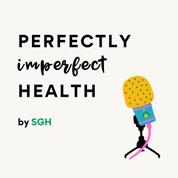
For more on this issue, click the link https://for.sg/perfectly-imperfecthealthmentalhealth or scan the QR code to listen to the ‘Mental Health’ episode of Perfectly Imperfect Health, SGH’s podcast.

My dad has diabetes and is on medication. He has also diligently cut down on sweet foods. Recently, I noticed that the medication he is taking is no longer effective, as his diabetes readings are at 10 or 11. The readings used to be 7.
Diabetes can progress over the years as we age, even if one is careful with diet and lifestyle. Most adults have type 2 diabetes, where there is resistance to the effect of a gut hormone called insulin. Insulin is produced in the pancreas and the amount released rises when we eat to bring down the blood sugar. However, over the years, the amount of insulin that the body can produce decreases, especially if one is overweight or obese.
Initially, various oral diabetic medications can help to bring down the blood sugar by different means. For example, metformin makes the body more sensitive to insulin; other

As diabetes progresses (and the body produces less insulin), the doctor may progressively increase the prescription of diabetic medicines. However, if the patient is on multiple diabetic medications and his sugar level remains high despite adhering to the right lifestyle, it may mean that he is unable to produce enough insulin naturally. This necessitates the initiation of insulin, which is given through a syringe and small needle over the abdomen. Once insulin is replaced, the blood glucose can go back to normal, and the patient can keep diabetes under control with some dose adjustments of oral medications.
Dr
that the National Cancer Centre Singapore’s Goh Cheng Liang Proton Therapy Centre has treated 67 patients as of February 2024? For patients with cancer, conventional radiotherapy remains the standard treatment, which is safe and effective for treating most solid cancers. Beyond conventional radiotherapy, proton therapy is an advanced type of radiotherapy suitable for certain cancers located close to vital organs and for treating some childhood cancers and tumours. Due to their physical properties, protons can target tumours more precisely, potentially reducing damage to nearby healthy tissues and organs, and causing less treatment-related side effects.

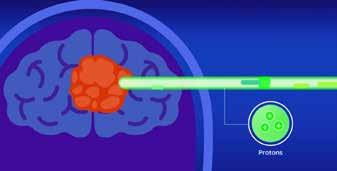
that two identifiers are needed as proof of identity when registering for clinic appointments, checking in at the wards, filling and receiving prescriptions, applying and receiving a medical report, transfers, and other service transactions at Singapore General Hospital (SGH)?
They are also needed before a blood test, x-ray and other scans, and surgical procedures. While having to repeat those details may be bothersome, it is necessary for hospital staff to ask for the identifiers at each step of a service or procedure to
May I have your name and identity card number?


make sure the right patient is being served, or that the right patient is about to undergo the right procedure.
The patient will be asked for his full name first, then his full identity card number — not just the last four characters — or foreign identification number for foreigners living or working in Singapore. If the second identifier is unavailable, his date of birth or address can be given.
May I have your name and identity card number?
So, when the patient registers for his clinic appointment, he will be asked for the first two identifiers. When he sees his SGH specialist in the consultation room, the doctor will again ask for the identifiers to confirm his identity. Likewise, when fetching a patient from a ward for procedures, the porter and ward staff will independently identify the person.

